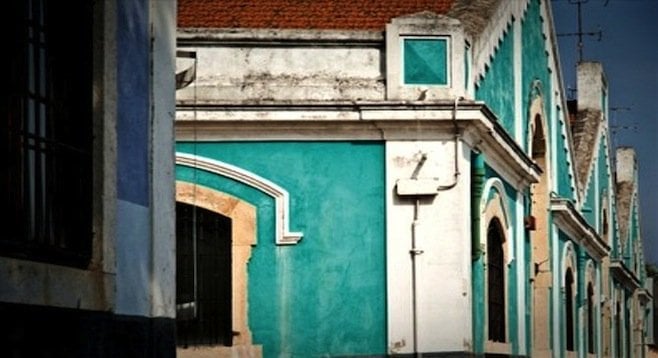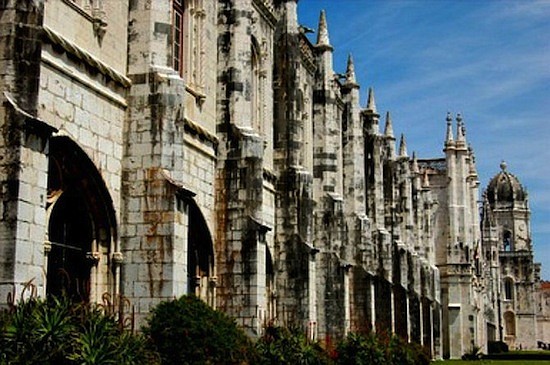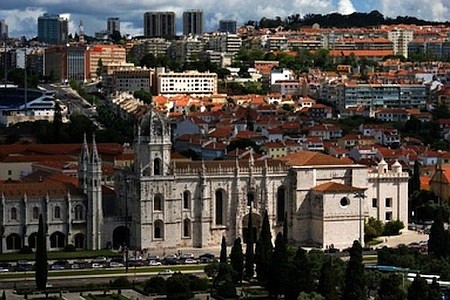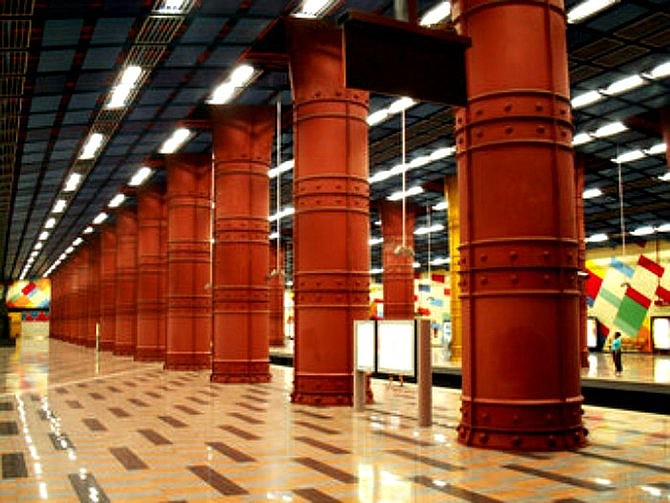 Facebook
Facebook
 X
X
 Instagram
Instagram
 TikTok
TikTok
 Youtube
Youtube

If you’re dying to go to Europe but discouraged by the value of the euro, consider Portugal, where you can actually spend less than $50 a day. Portugal’s capital city, Lisbon, has stunning Moorish castles, quaint museums and Gothic cathedrals against a backdrop of hillsides overlooking the Rio Tejo.

Here you have all the cultural offerings of a European city. Stay at a pensoes (pension) in the lovely backstreets of downtown Baixa or a room in a restored convent at a fraction of the price in most European destinations. If you spend much time in Lisbon, you'll notice that most sights can be seen by foot; it's a walkable, approachable city, and not quite as sophisticated as its sister cities of Rome, Paris or London. There are shabby yet fascinating houses alongside art galleries, wonderful parks and fashionable cafes.
Lisbon is full of great hostels, with prices from $15 a night depending on the season. You can make a reservation through one of the many hostel booking websites.
If you're adventurous and want to save even more, Lisbon has a very active Couchsurfing.com community. I attended a party given by Couchsurfing forum members on my first night in Lisbon. I met a lot of really nice people and spent the next four days couchsurfing with various members who acted as tour guide and taxis for the duration of my stay.
Most hostels and pensions have cooking appliances and/or kitchen privileges, so you can save money on food by purchasing groceries at the local market and preparing your meals. Many include a breakfast in the price of the room and offer an inexpensive family-style dinner. Many local restaurants offer meal packages or discount menu items, so you don’t have to break the bank to splurge at a restaurant. Tipping is 15% less than expected in the U.S.
The hop-on-hop-off city bus tour was less than impressive, and walking around the city was more interesting. You can walk almost everywhere in pedestrian-friendly Lisbon to really appreciate the fascinating architecture, scenic hilltop views and free live music everywhere.

Be sure to visit the quaint suburb of Belém (left) to experience “pasteis de Belem,” a custard-filled pastry available only in this part of the world, followed by a hike to the hilltop district of Bairro Alto with its restaurants and bars packed with friendly locals.

Lisbon is a hilly city and offers many scenic views. The historical center is located on the banks of the Tagus River. Before you go, purchase the Lisboa Card online, which offers discounts on public transport, attractions and restaurants around the city.
If you have an extra day, be sure to visit the town of Sintra to see the two castles that hover above the town. It's $35/person for a full-day, 10-hour guided tour – well worth the splurge.

Once you arrive at the Lisbon airport, get a map from the Tourist Office to acquaint yourself with the city and public transport to save money. Taxis from the airport are inexpensive; just make sure you agree on a price in advance.
Portugal’s train network is punctual and reasonably priced, so you can take short trips between cities for less than $22. Check out European budget airlines such as Easy jet and Ryan Air too; many flights are cheaper than trains and reduce travel time as well.
The best times to visit Portugal are March, April and May and late September and October when there are less tourists, prices are much lower and the weather is nice.


If you’re dying to go to Europe but discouraged by the value of the euro, consider Portugal, where you can actually spend less than $50 a day. Portugal’s capital city, Lisbon, has stunning Moorish castles, quaint museums and Gothic cathedrals against a backdrop of hillsides overlooking the Rio Tejo.

Here you have all the cultural offerings of a European city. Stay at a pensoes (pension) in the lovely backstreets of downtown Baixa or a room in a restored convent at a fraction of the price in most European destinations. If you spend much time in Lisbon, you'll notice that most sights can be seen by foot; it's a walkable, approachable city, and not quite as sophisticated as its sister cities of Rome, Paris or London. There are shabby yet fascinating houses alongside art galleries, wonderful parks and fashionable cafes.
Lisbon is full of great hostels, with prices from $15 a night depending on the season. You can make a reservation through one of the many hostel booking websites.
If you're adventurous and want to save even more, Lisbon has a very active Couchsurfing.com community. I attended a party given by Couchsurfing forum members on my first night in Lisbon. I met a lot of really nice people and spent the next four days couchsurfing with various members who acted as tour guide and taxis for the duration of my stay.
Most hostels and pensions have cooking appliances and/or kitchen privileges, so you can save money on food by purchasing groceries at the local market and preparing your meals. Many include a breakfast in the price of the room and offer an inexpensive family-style dinner. Many local restaurants offer meal packages or discount menu items, so you don’t have to break the bank to splurge at a restaurant. Tipping is 15% less than expected in the U.S.
The hop-on-hop-off city bus tour was less than impressive, and walking around the city was more interesting. You can walk almost everywhere in pedestrian-friendly Lisbon to really appreciate the fascinating architecture, scenic hilltop views and free live music everywhere.

Be sure to visit the quaint suburb of Belém (left) to experience “pasteis de Belem,” a custard-filled pastry available only in this part of the world, followed by a hike to the hilltop district of Bairro Alto with its restaurants and bars packed with friendly locals.

Lisbon is a hilly city and offers many scenic views. The historical center is located on the banks of the Tagus River. Before you go, purchase the Lisboa Card online, which offers discounts on public transport, attractions and restaurants around the city.
If you have an extra day, be sure to visit the town of Sintra to see the two castles that hover above the town. It's $35/person for a full-day, 10-hour guided tour – well worth the splurge.

Once you arrive at the Lisbon airport, get a map from the Tourist Office to acquaint yourself with the city and public transport to save money. Taxis from the airport are inexpensive; just make sure you agree on a price in advance.
Portugal’s train network is punctual and reasonably priced, so you can take short trips between cities for less than $22. Check out European budget airlines such as Easy jet and Ryan Air too; many flights are cheaper than trains and reduce travel time as well.
The best times to visit Portugal are March, April and May and late September and October when there are less tourists, prices are much lower and the weather is nice.
Comments